Last week a colleague mysteriously encouraged me to pop my head into the Photo Studio, for a ‘nice surprise’. Not knowing quite what to expect, I arrived to find Metalwork Curator Kirstin and Senior Metals Conservator Donna in the final stages of assembling the rather stunning chandelier which will be part of our Louis XIV display.
To enable full, clear photography of the chandelier it needed to be suspended and so a small scaffold had to be erected in the Photo Studio. To reduce the risk of damaging any ‘loose’ or protruding parts, the chandelier was transported to the studio partially dismantled. This meant that once the main body of the chandelier was safely attached to the scaffold, Kirstin and Donna then had to reassemble the removed parts – most crucially the eight ‘S-scroll’ arms.
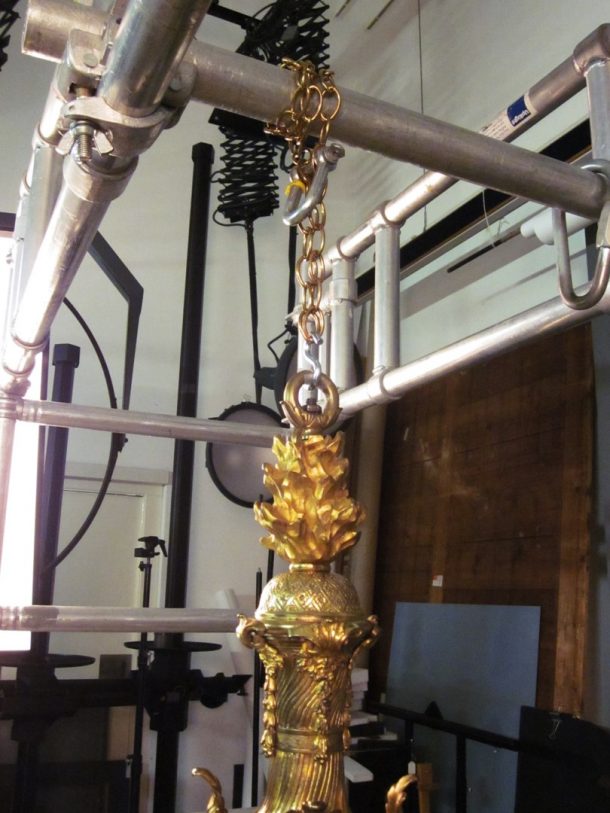
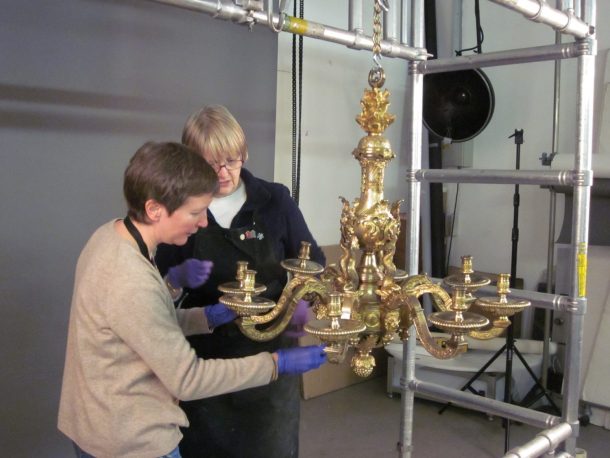
This impressive lighting fixture is a gilt bronze chandelier which was made to a design by the famous French cabinet-maker André-Charles Boulle, in Paris around 1700. It came to the Museum in 1882 as part of the vast John Jones Bequest.
André-Charles Boulle was a highly regarded figure, particularly admired for his marquetry skills. He supplied furniture and clocks with gilt bronze mount decoration to the Bâtiments du Roi (The King’s Buildings) throughout his career and at some point before 1666 was awarded the title of master cabinetmaker.
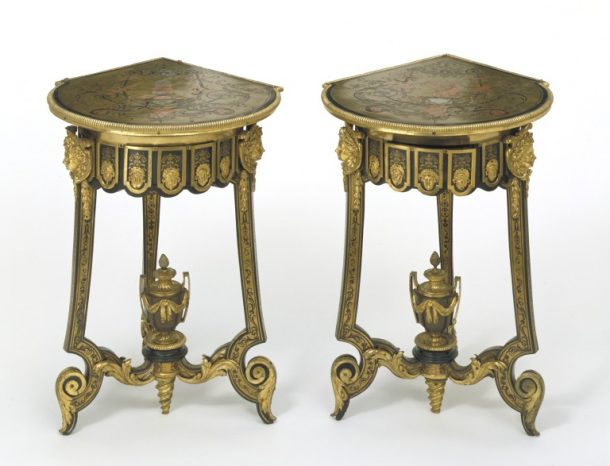
It is thought that Boulle did not commence his production of chandeliers until late on in his career, during the early years of the 18th century. The Getty’s catalogue French Furniture and Gilt Bronzes: Baroque and Régence notes that a fire in Boulle’s workshop in August 1720 destroyed eight chandeliers and most of their related models and that in the inventory taken after Boulle’s death in 1732 only small fragments of chandelier models were listed.
If this chandelier was not only designed by, but also made by Boulle, then this might help account for the fact that it is one of only four known copies of this design featuring eight arms. Two others are currently in the collections of the Louvre and the J Paul Getty Museum and a fourth was listed at Dorotheum’s Autumn Auction in 2010.
We can’t know if it was the same design as ours, but a chandelier with dolphins is first mentioned in the inventory of the marchand merciers Francois Darnault, a father and son enterprise, who traded from the Le Roy d’Espagne, a shop in the Rue de la Monnoie, Paris. The inventory was taken on 28th August 1753 and in it the chandelier is given the stock number 247. As the total stock amounted to 4863, this indicates that it had been in Darnaults’ possession for some years.
Having admired it hanging in the Photo Studio and read up more on it’s history, I was keen to understand more about the chandelier’s construction, so today I went to take a closer look at it with Donna in Metalwork Conservation.
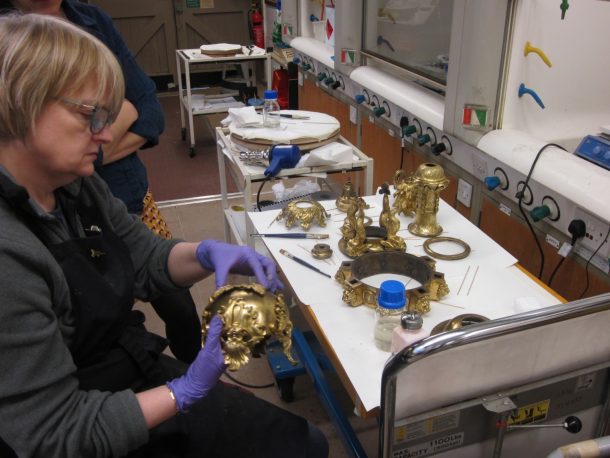
Although it was all clean and shiny for its trip to the Photo Studio, it still requires further conservation work before it is installed in the galleries. Donna is currently in the process of applying a protective coat of lacquer to the chandelier – this will prevent the surface oxidising and corroding.
The decision was made to photograph the chandelier before the lacquer was applied, to avoid any risk of the lacquer surface being damaged when moving and assembling the various parts together. Luckily for me this meant that I was able to see the chandelier in a rather deconstructed state.
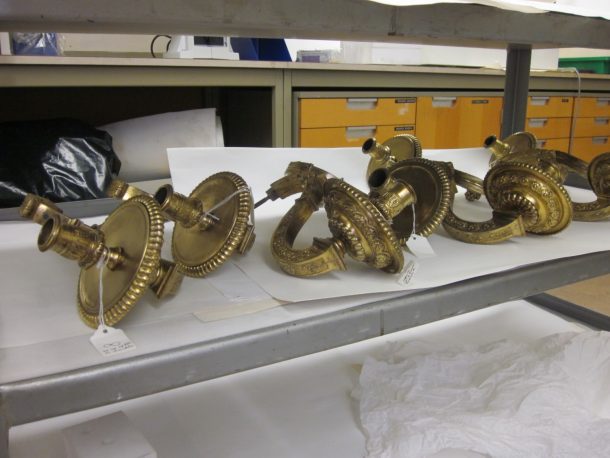
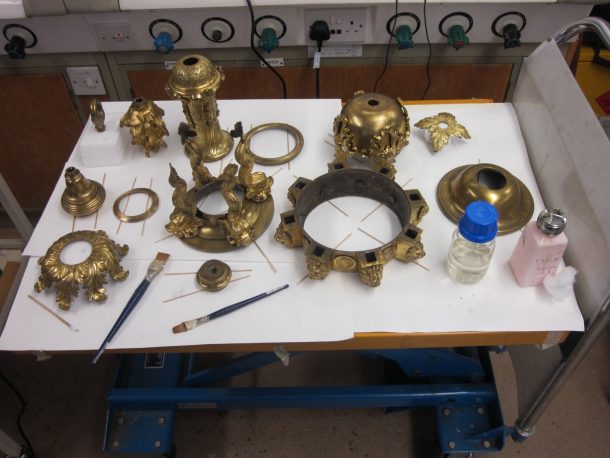
Nearly all of the pieces need to be carefully balanced on supports as the lacquer dried to ensure they didn’t stick to the work surface.
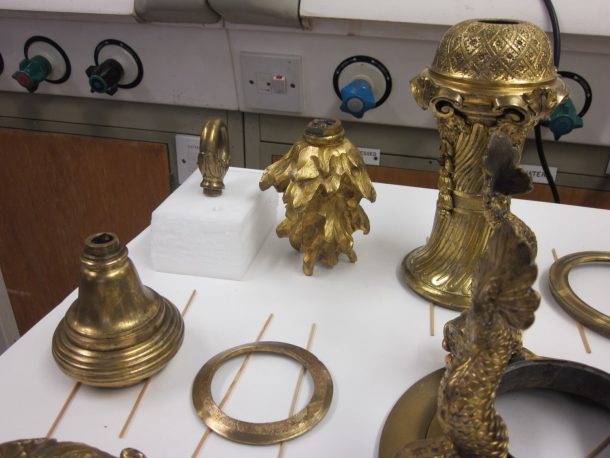
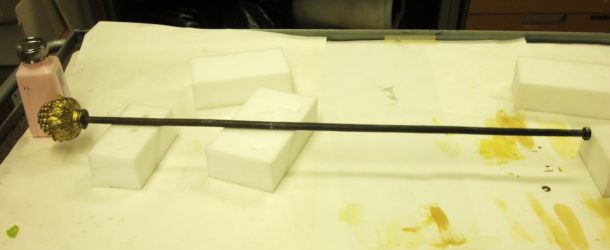
I was slightly surprised by just how many separate pieces made up the final object. Doing a quick count, I noted there were fourteen pieces laid out on the trolley. In addition, the lion heads and acanthus leaves could (theoretically) also be removed, as could the four dolphins that stretch from the bottom of the ‘vase’ to the point where the armature supports the eight arms. Donna explained that each of the eight arms were also made up of six pieces.
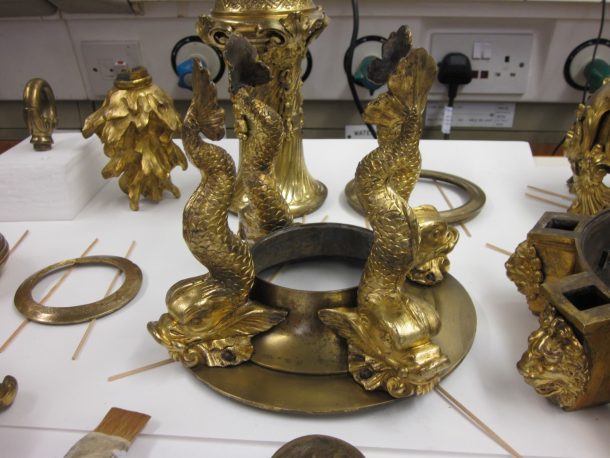
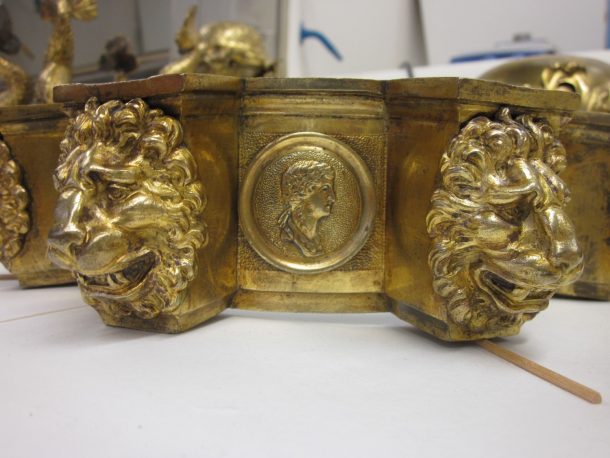
Donna got me to look closely at the receiver bowl from the chandelier (the bowl-shape part at the bottom), pointing out the visible angular patches on it. These marks provide clues as to how the gilt was applied to this particular part of the chandelier. I will update you with Metalwork Conservation’s findings and conclusions about this in the future.
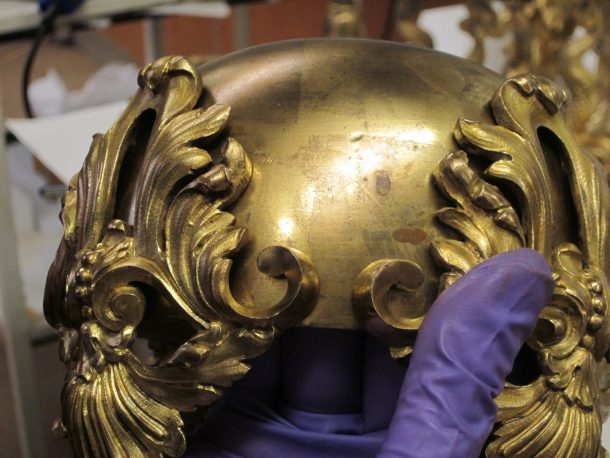
One of the aspects that really caught my eye were the holes and notches found on each of the eight arms and their corresponding sockets. The arms of the chandelier are attached to the main body using threaded rods and these round punch marks appear to have been used for numbering the parts during construction.
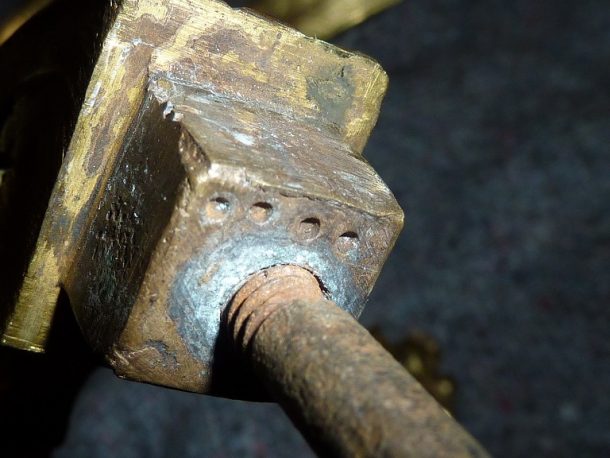
Interestingly though, in its current formation, the pieces do not always comfortably match and attach to what should be their corresponding number – this makes me imagine 18th century versions of the frustrations caused by confusing self-assembly furniture instructions …
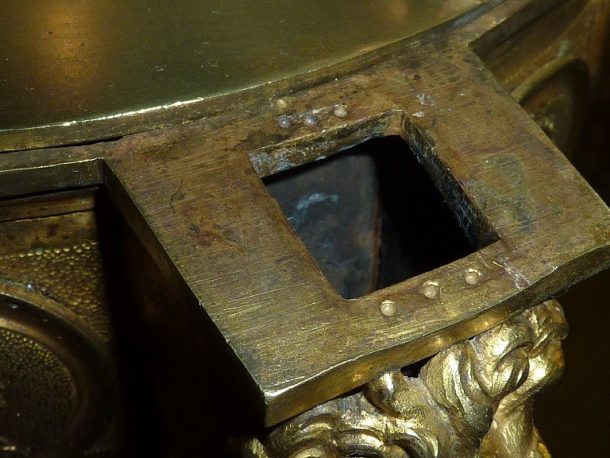
The design of this chandelier appears to have enjoyed lasting appeal, as its ‘dolphin design’ was later copied in the 19th century, most notably for William II of Germany, and was recorded in the Royal Palaces, Berlin and Potsdam. You can see an example of this below.
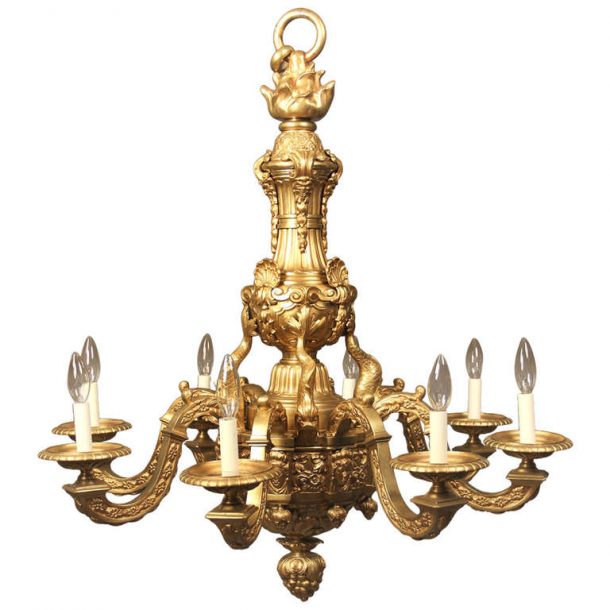
It is interesting to note that the chasing used for this later model does not appear quite so fine and expressive as on our chandelier. The flaming finial has been simplified and the medallions above the receiver bowl have been substituted with other decoration.
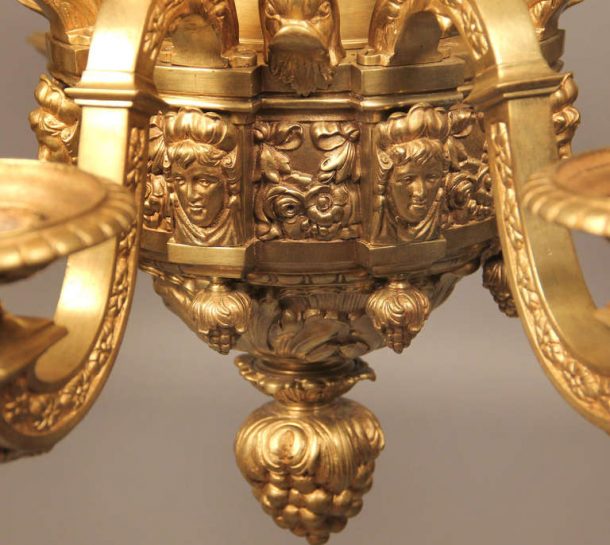
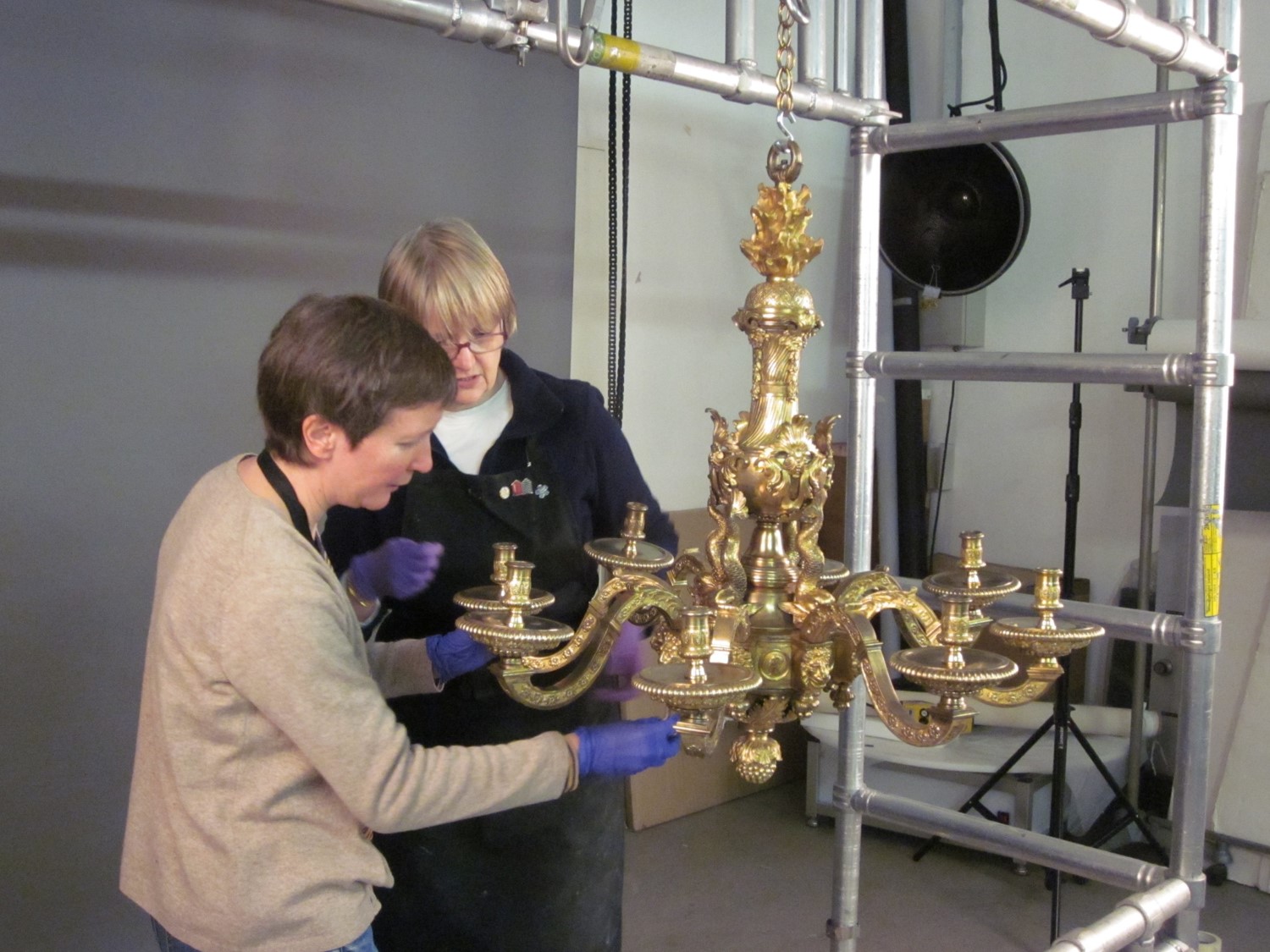
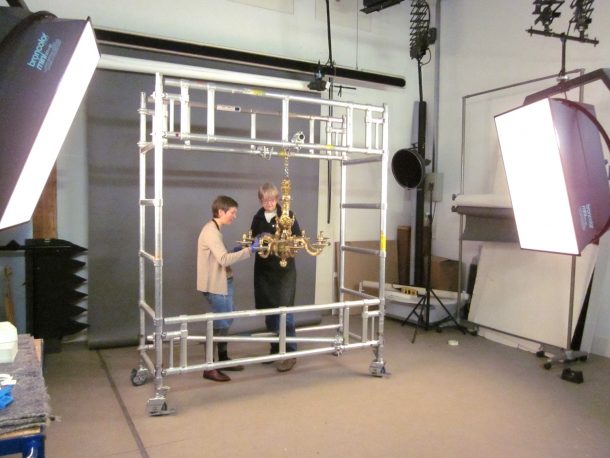

Good afternoon,
would it be possible to receive a copy of the treatment report, to learn how you did the electrification ?
Thank you.
Best regards
Olivier Lagarde
Dear Olivier,
Thank you for your interest in this post. We haven’t electrified the V&A’s chandelier and it will be on display in the galleries in its current (cleaned) condition. However, some of the 19th-century chandeliers which are reworkings of the design (like the one included at the end of the post) appear to have been adapted to take electric lighting.
Best wishes,
Dawn